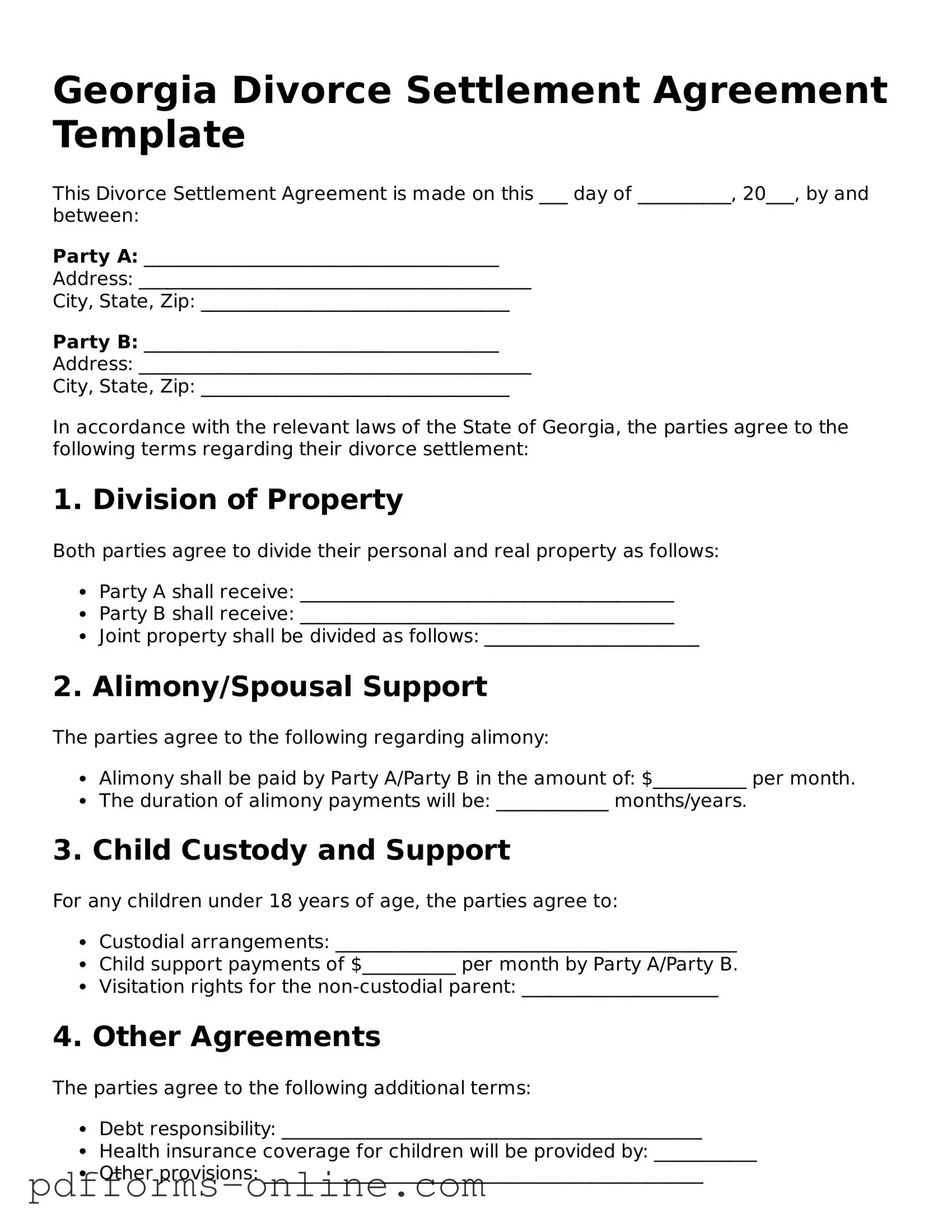Georgia Divorce Settlement Agreement Template
This Divorce Settlement Agreement is made on this ___ day of __________, 20___, by and between:
Party A: ______________________________________
Address: __________________________________________
City, State, Zip: _________________________________
Party B: ______________________________________
Address: __________________________________________
City, State, Zip: _________________________________
In accordance with the relevant laws of the State of Georgia, the parties agree to the following terms regarding their divorce settlement:
1. Division of Property
Both parties agree to divide their personal and real property as follows:
- Party A shall receive: ________________________________________
- Party B shall receive: ________________________________________
- Joint property shall be divided as follows: _______________________
2. Alimony/Spousal Support
The parties agree to the following regarding alimony:
- Alimony shall be paid by Party A/Party B in the amount of: $__________ per month.
- The duration of alimony payments will be: ____________ months/years.
3. Child Custody and Support
For any children under 18 years of age, the parties agree to:
- Custodial arrangements: ___________________________________________
- Child support payments of $__________ per month by Party A/Party B.
- Visitation rights for the non-custodial parent: _____________________
4. Other Agreements
The parties agree to the following additional terms:
- Debt responsibility: _____________________________________________
- Health insurance coverage for children will be provided by: ___________
- Other provisions: _______________________________________________
5. Acknowledgment
Both parties acknowledge that this agreement is made voluntarily and with full knowledge of the terms involved. Each party understands their rights and obligations under this agreement.
6. Signatures
This agreement is binding upon signing by both parties:
Party A Signature: _______________________ Date: ____________
Party B Signature: _______________________ Date: ____________
Witness Signature: _______________________ Date: ____________
